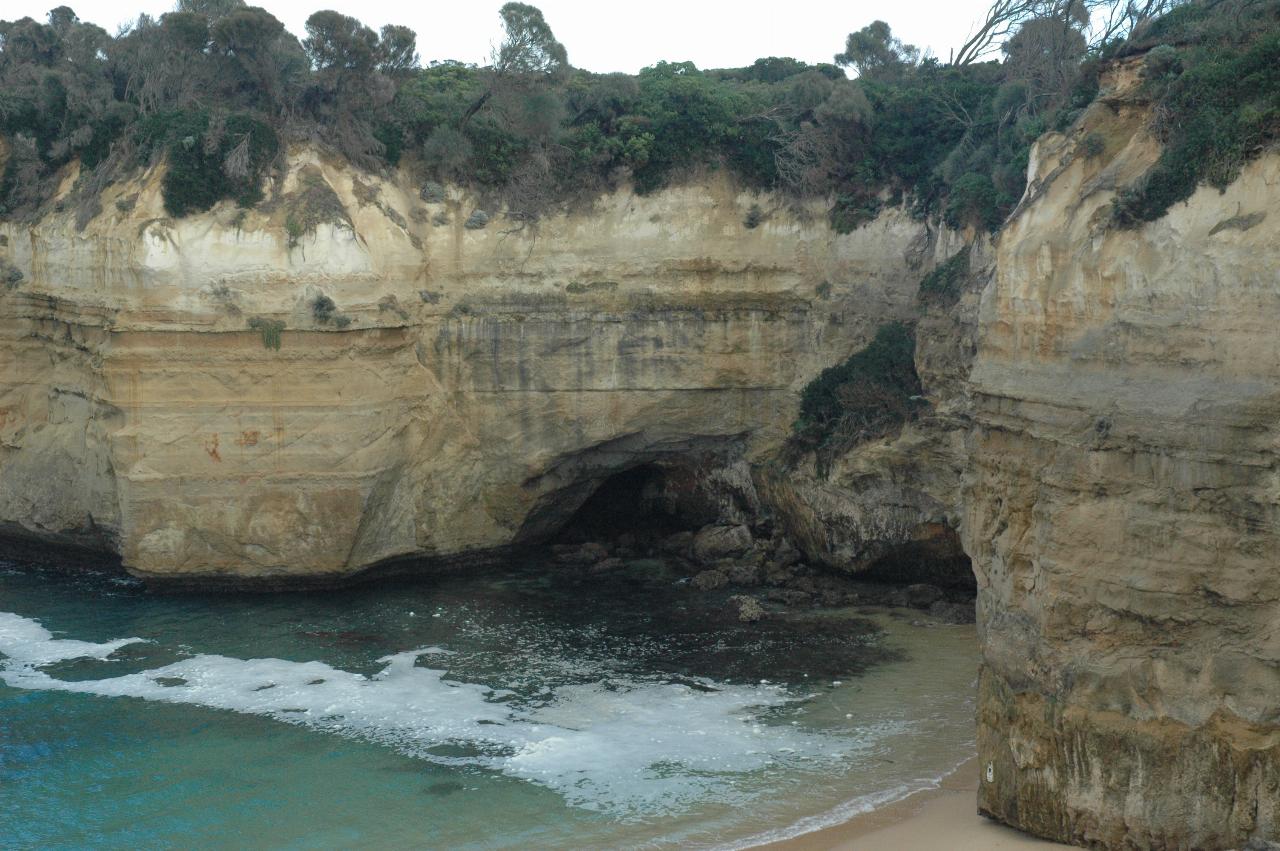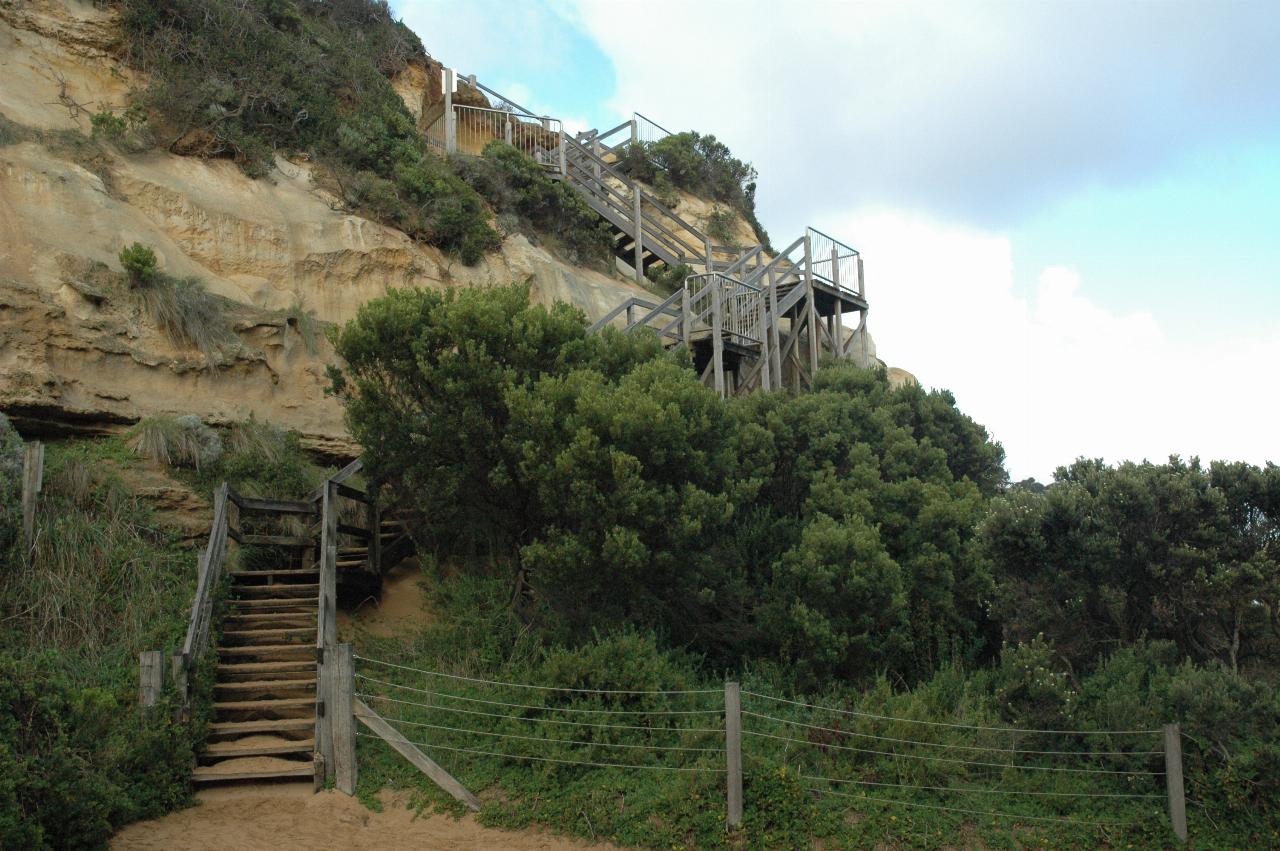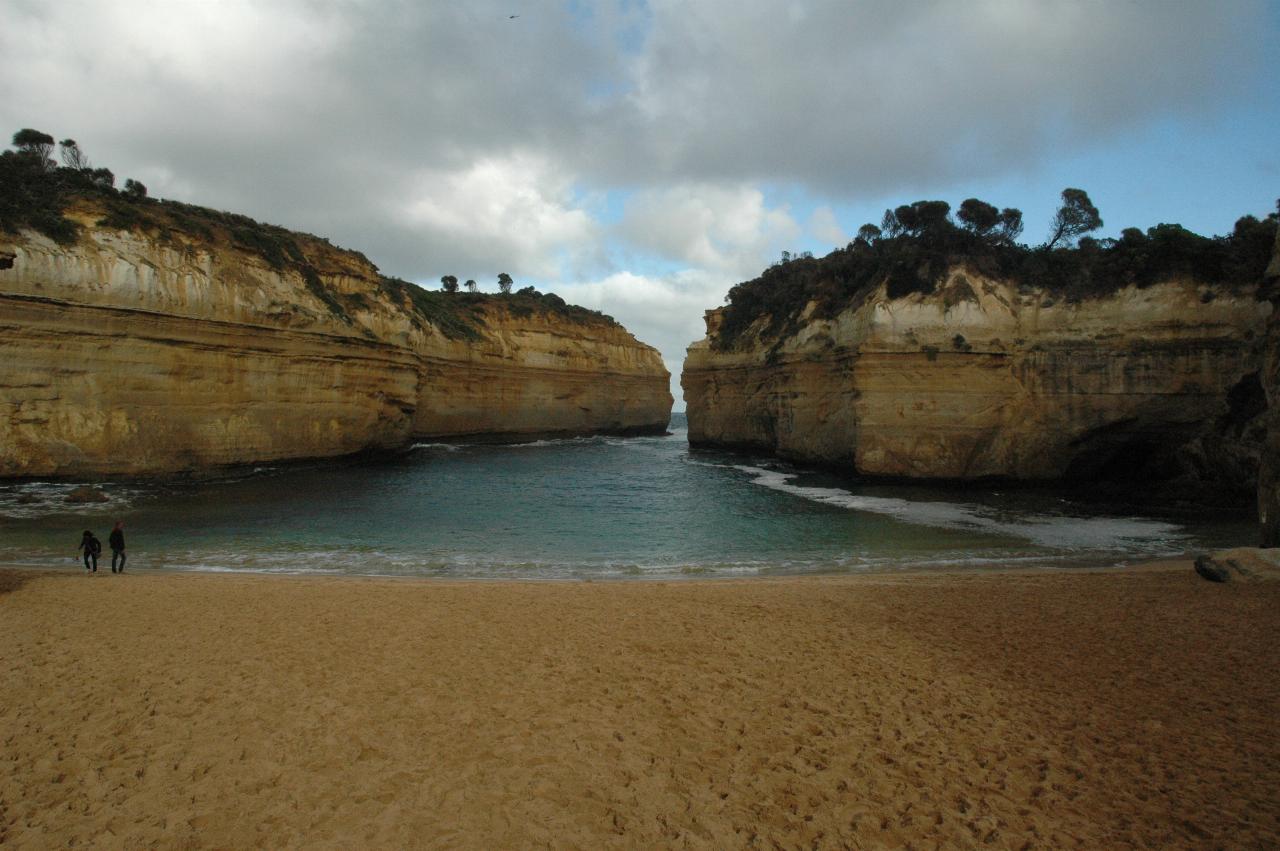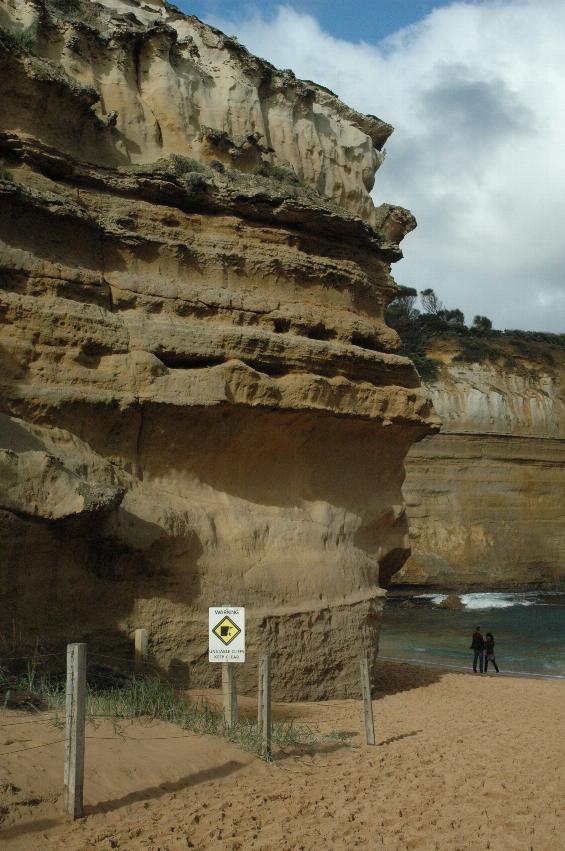Loch Ard Gorge
After London Arch it is time to resume the eastward journey,
through Port Campbell and onto
Loch Ard Gorge.
The gorge is named after the clipper ship
Loch Ard
which ran aground on Muttonbird Island on 01 June 1878 (mid winter!) after a
three month journey from England.
A display board at the site explains:
#side right is not known

Only two of the 54 people on board the
Loch Ard
survived: 18 year old Eva Carmichael, one of a family of eight Irish
immigrants, and a ship's apprentice Tom Pearce.
After the ship went down Tom drifted for hours under an upturned lifeboat.
When the tide turned at dawn, he was swept, bruised and battered, into
this gorge. Shortly after reaching the beach he heard cries from the
water, and saw Eva clinging to a spar.
Tom quickly swam out and struggled for an hour to bring her to the beach.
He sheltered her in the cave and revived her with some brandy, which
had washed ashore. Then, exhausted, they both slept.
Upon waking, Tom climbed out of the gorge to search for help. He came
upon two stockmen from nearby Glenample Station.
The owner, Hugh Gibson, made immediate arrangements to get Eva out of
the gorge and back to the safety of the homestead.
Carmichael returned to Europe three months later. Tom died aged 49,
and is buried in Southampton, England.
#side left is not known

The gorge is shaped like an upside down Y, as seen here. The photo is
taken from the mid point of the Y, with one branch to the left, another
to the right, and the ocean at the bottom of the Y. There are stairs
leading down to the right hand side of this photo.


Most of the people in this photo are school children, who posed for a group
photo just before this photo was taken. Even so, it's quite a ways down.

The ocean is eroding the base of this cliff. With time, it may tunnel
under the small cemetery which is located above it.

The stairs to reach the beach from the parking area above. Tom Pearce
must have had a difficult time climbing out of here to raise the alarm
after his rescue.

These stalactites have likely been there quite some time, so it appears
the sea is no longer eroding the base of this cliff, which is located at
the greatest distance from the sea. The sign warns to stay behind the wire
border just in front of the vegetation.

These two people on the left give a sense of scale to the height of the
cliffs, and the distance to the ocean.


Further indication that the cliffs are very soft, suffering constant erosion.
The sign's wording:
Warning! Unstable cliffs. Keep Clear.








